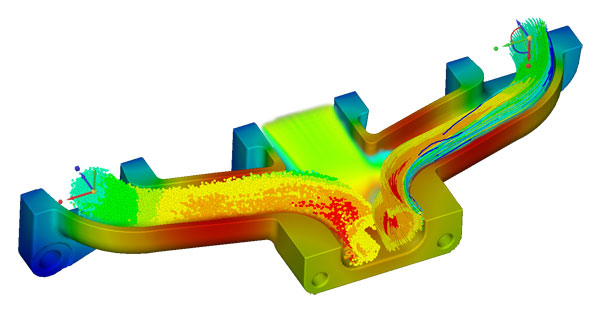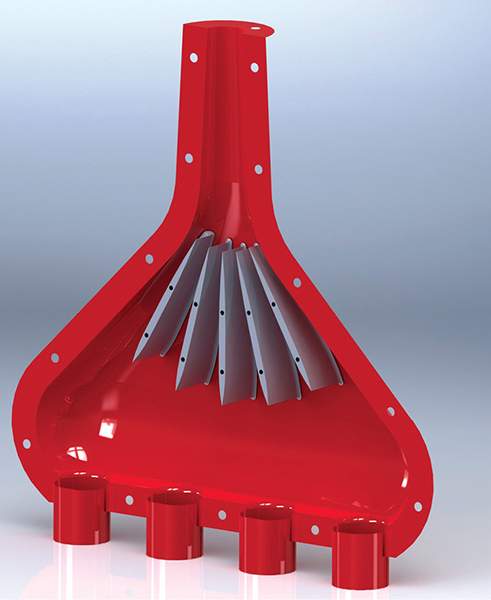Going Live with Real-Time Simulation
GPU-powered simulation advances democratization of simulation.

GPU-powered parallel processing allows instant display of complex fluid flow and thermal results. Image courtesy of ANSYS.
Engineering Resource Center News
Engineering Resource Center Resources


Latest News
June 6, 2019
When ANSYS and PTC announced they were working to bring real-time simulation capabilities to PTC Creo 3D CAD software at the PTC LiveWorx conference last summer, it was a validation of both workstation-based simulation-led design workflows and the graphics processing units enabling them.
ANSYS developed its real-time simulation solution, ANSYS Discovery Live to further its strategy of pervasive engineering simulation. The software taps into NVIDIA GPUs to enable design engineers to simulate design concepts in real time. ANSYS integrated its SpaceClaim direct modeling technology into Discovery Live to create an environment where users can move and adjust geometric features and quickly see how it affects the simulation. For many cases of design exploration, the direct editing tools in ANSYS Discovery Live let users bypass the need to go back to the CAD program to make the change and regenerate the simulation geometry, thus speeding up the iterative analysis.
“With the combined solution, engineers will be able to see the real-time results of simulation during the modeling process, enabling them to understand design changes in their models,” said Jim Heppelman, president and CEO, PTC, when the partnership was announced. “This capability has the potential to dramatically improve engineering productivity and quality and the combined solution can be a differentiator in the market.”

Looking Ahead for Real-Time Simulation
Now that LiveWorx 2019 is here (June 10-13, Boston), along with Creo 6.0, PTC Creo Simulation Live users have a unified modeling and simulation environment that helps remove boundaries between CAD and simulation. It’s one more step toward democratizing simulation to make it more accessible to a larger pool of users. To be clear, PTC Creo Simulation Live and ANSYS Discovery Live are not intended to be replacements for advanced computer-aided engineering simulation applications. They are intended to be used as rapid analysis environments.
“With them, you get amazing design insights, design innovation. You can ask, what if I go in this direction with my design? Or that direction instead? But these tools are not simulation replacements. Don't let the vendors oversell you. They are design guidance,” warned Andreas Vlahinos, CTO of Advanced Engineering Solutions at the COFES 2019 event.
The Live products take advantage of the massively parallel architecture of GPUs—specifically, NVIDIA GPUs. The real-time aspect of the software—the ability to visualize the physics, structural deformation and animated fluid or air flows—comes via the software’s architecture, which harvests the GPU’s processing power. “A minimum of 4GB of GPU memory is required for real-time interactive simulation, although 8GB is recommended,” says Andrew Rink, head of manufacturing industry marketing strategy at NVIDIA. “And NVIDIA Quadro performance scales up the product range, so the more powerful the GPU, the faster the performance.”
PTC customers can try out real-time simulation with Creo Simulation Live, powered by ANSYS, to get real-time guidance on design decisions as they make them. Creo Simulation Live runs in the background, providing instant feedback as users make changes to a design. Creo Simulation Live works on parts and assemblies, providing structural, thermal and modal analysis so you can iterate more quickly and design with greater confidence.
Dell is exhibiting at LiveWorx 2019, showcasing the company’s line of Precision workstations, which can be equipped with the NVIDIA Quadro GPUs needed to test drive ANSYS Discovery Live or PTC Creo Simulation Live.
Subscribe to our FREE magazine, FREE email newsletters or both!
Latest News





